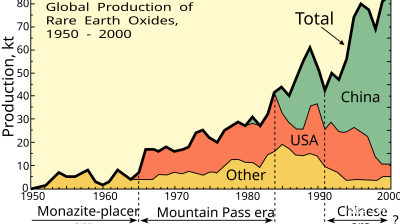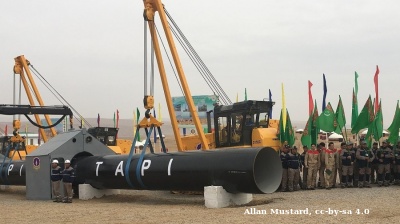The green agenda is dominating the debate today, but the importance of environmental issues is nothing new: 30 years ago it was a green revolution that brought the Soviet Union down.
Mass protests in the Baltic states on green issues led to the wider revolt against rule from Moscow in the region, whose three states were the first to break away from the USSR.
Green protests in the Caucasus and Central Asia also sowed the seeds for the later nationalist uprisings.
The power of these protests was underestimated by the Politburo, which didn’t regard environmentalism as political, and so made the fatal mistake of failing to crack down until it was too late.
The wave of protests from 1986 onwards was sparked by the Chernobyl disaster that shook millions of ordinary citizens’ faith in the communist system.
In the early hours of April 26, 1986, one of the Chernobyl nuclear power plant’s reactors exploded. A combination of the flawed design of the reactor and the actions of an inadequately trained technical team caused a power surge within the reactor which then exploded. Emergency workers covered the reactor in concrete but the damage had already been done; at least 5% of the radioactive reactor core had been released.
Despite the scale of the disaster — two workers were killed outright, 28 died soon afterwards and the emergency response teams were exposed to dangerous radiation levels — the deadly incident was only reported on the national news two days later. In fact it was workers at a Swedish nuclear power plant over 1,000 km away that alerted the world to the disaster when their monitors picked up high levels of radiation, which they discovered were from radioactive particles that rained down from clouds blown over from the southeast.
The Chernobyl disaster took place more than five years before the breakup of the Soviet Union at the end of 1991. Yet arguably it precipitated the end of the communist system by exposing its faults in ways that could not be ignored. The disaster caused many Soviet citizens to measure the quality of their country’s technology against that of the West for the first time. The fate of the tens of thousands of workers who rushed to Chernobyl to help and in return were exposed to dangerously high levels of radiation raised further questions about the system’s incompetence and lack of care for the health of its population.
The then general secretary of the Communist Party Mikhail Gorbachev wrote years later that Chernobyl was “perhaps the real cause of the collapse of the Soviet Union”. He called it a “historic turning point” that “opened the possibility of much greater freedom of expression, to the point that the system as we knew it could no longer continue”.
Specifically, it sparked a mass anti-nuclear movement that went far beyond the areas actually affected by fallout from the disaster, and by normalising dissent against the regime sowed the seeds of the later mass protests calling for independence for the republics.
The first Soviet nuclear electric power plant had been built in Obninsk, southwest of Moscow, in the 1950s, and at the time of the Chernobyl disaster plan had been drawn up to build dozens more. However, the disaster sparked mass protests in cities across the union that eventually led to these plans being scrapped.
Longstanding dissent
The anti-nuclear protests of the 1980s weren’t the first environmentally motivated dissent within the Soviet Union. Several scientists in the early years of communism were among the most prominent in the world in environmental awareness, but any objections to the mass industrialisation of the 1920s and 1930s were crushed by Stalin. Yet as early as the 1950s and 1960s such concerns publicly reemerged.
The idea of reversing some of the great Siberian rivers that flow north into the Arctic Ocean down towards the cotton fields of Central Asia had been periodically discussed for decades. Author and environmentalist Sergei Zalygin argued from the 1960s for the plan to be dropped, as well as campaigning against other mega projects in Siberia. Nuclear physicist Andrei Sakharov predicted global warming as a result of rising carbon dioxide emissions back in 1968 as well as warning of the impact on the environment from economic activity.
The pillage of Siberia’s vast and previously untouched lands for logging, hydropower, mining and heavy industry had become an increasingly contentious issue. One of the flaws of the communist government was the view that as Russia is so vast they regarded its natural resources — including the land — as infinite. That mentality led to incredibly wasteful policies and planetary scale pollution. The northern mining city of Norislsk, for example, became the world’s most polluted city.
But when it came to polluting Lake Baikal, the Soviet people pulled the government up short. For them, the resources were not infinite, and they had to live with the damage. The ecological devastation of Lake Baikal, the world’s deepest freshwater lake containing around 20% of the world’s fresh water, dismayed both environmentalists and local residents. The lake and its shores were heavily polluted by logging and subjected to a constant stream of waste from the Baikal Pulp and Paper Plant from the 1950s. A sacred place to the local Buryat people and dear to the hearts of many Russians, the pollution of Lake Baikal was seen as serious enough for people to overcome fears of reprisals and turn out for large-scale protests back in the 1970s and 1980s, demanding a ban on industrial activity on its shores.
Soviet officials prided themselves on the massive projects like the Bratsk hydroelectric dam that was the world’s biggest hydropower plant (HPP) until it was overtaken by the Krasnoyarsk hydropower plant on the Yenisey in 1966, which in turn was superseded by the Sayano-Shushenskaya hydropower plant. However, these had also been criticised by environmentalists, with Zalygin managing to stop the construction of a major plant on the Ob. The positive dialogue about hydropower development was further altered by Valentin Rasputin’s book Farewell to Matyora, which tells the story of the resettlement of a village by the Angara river to make way for the construction of a dam.
Despite this, plans to build more and bigger dams continued. A project to dam the Katun river and build another massive hydropower plant in the mountainous Altai Region, first proposed in the 1960s, was revived in the late 1970s. The dam would have flooded 11,200 square kilometres of land. There followed a campaign by scientists, journalists and even government officials to drop the project.
Economy vs environment
While there were laws on the protection of the environment in the Soviet Union, these tended to be given secondary consideration compared to the imperative of fulfilling production quotas. When companies were fined for pollution — often because it affected the activities of another industrial company — rather than suffering financially as they would in a market economy, money was simply shuffled from one state-owned entity to another. Commenting on the penalties imposed on one industrial polluter in his book “A Walk in Rural Russia” back in 1967, the Russian poet and writer Vladimir Soloukhin wrote: “It is a ridiculous situation: money is transferred from one account to another account, but this makes it no better for the fish in the river, nor for the people living near the river.”
The Soviet attitude to environment versus economy was nowhere more evident than in the destruction of the Aral Sea, the world’s worst man-made catastrophe. When the decision was made to divert the rivers that flowed into the inland sea to irrigate the cotton fields of Central Asia it was based on a calculation that the cotton produced would be worth more than the existing Aral fishing industry. That didn’t take into account the devastation of the environment and communities in a wide area around as the sea receded leaving behind polluted sand that was constantly whipped up into toxic dust storms, which even today, decades later, are still polluting large areas of Uzbekistan and its neighbours.
It was only in the final years of the Soviet Union that the authorities started to change their stance, making the environment a real priority. By then, however, it was already too late.
Protests on environmental and other issues steadily grew in size in the final years of the Soviet Union, where the first mass environmental protests in 1986 and 1987 were followed by even bigger protests in 1989 and onwards, when anger over ecological issues combined with a plethora of other issues to create an explosive situation that the government in Moscow was eventually unable to control.
The economic and political reforms of glasnost in the last 1980s accelerated this process. The mass protests and activism on environmental issues wouldn’t have been tolerated under previous regimes. And in turn, the protests encouraged the creation of movements on nationalist, human rights and other issues and helped to precipitate the collapse of the union, just as they did in the Eastern Bloc countries where communism collapsed in 1989.
The Baltics break away
In the Baltic states one burning environmental issue after another brought people onto the streets of towns and cities across the region. Hundreds of thousands of people joined protests in Latvia over plans to build the huge Daugavpils hydroelectric power station, which would have drowned the cliffs of the cliffs of Staburags that are featured in the Latvian national epic, Lacplesis.
Then in April 1988, more than 15,000 people joined a protest against plans to build a metro system in Riga. People were urged out onto the streets by the Latvian Environmental Defence Club, which argued that the project was economically unsound and risky for an environmental point of view. Footage from the protest shows a huge crowd of people chanting “metro — no”, carrying placards in Latvian and Russian, one of which compares the metro to AIDS.
Impetus for independence
In Lithuania, the green movement gave a strong, some say key, impetus to the national movement Sąjūdis, which led to the restoration of the country’s independence in 1991. It was intertwined with ethnocultural and environment protection events throughout.
“I’d say the green movement was key in restoring our independence, as it allowed to operate under the politically innocent slogans of environment protection and et cetera. Namely it prompted the emergence of Sąjūdis, the national movement that led to the independence,” Zigmas Vaisvila, signatory of the 1991 Independence Restoration Act, and a former deputy chairman of Žemyna, the 1990s’ environment protection organisation within the country’s Academy of Science, told bne IntelliNews.
Before that, in the summer of 1988, on the initiative of the Kaunas Ethno-heritage Protection Club Atgaja (founded in 1987), an ecological protest march was organised and focused on the most painful ecological problems, especially those concerning the nuclear power plant in Ignalina.
“The green protests fostered national consciousness and enhanced the determination to fight for independence, although the latter came later,” Vaisvila says.
In 1989, an anti-war peace march, urging the Soviet army to leave, took place in Lithuania. During the year, pickets were held at polluting factories, military and other facilities, and environmental discussions were ‘clearly’ of the broader, political agenda, he says.
Across the region, environmental protests were the precursors to the mass uprising in the Baltic states against Moscow’s rule. Some 2mn people joined hands in a huge human chain between the capitals of the three cities on August 23, 1989. Prompted by the revelation that a secret protocol to the Molotov-Ribbentrop Pact had been signed between the Soviet Union and Nazi Germany allocating the Baltic states to Moscow, the Supreme Soviet of the Lithuanian SSR accused Moscow of forcibly occupying the three states and argued their sovereignty should be restored. Just over two years later — after the failed August 1991 coup in the Soviet Union — the Baltic states declared their independence.
From environment to nationalism
In the South Caucasus, the Metzaor nuclear power plant was one of the rallying points in nearby Yerevan. Even closer to the city was the Nairit chemical plant, where a valve exploded in April 1990, releasing toxic chloroprene gas. This caused dozens of people to be hospitalised and many more in the capital reported feeling sick. This prompted more protests, but the plant was closed only temporarily. Later, the protests over Metzamor, Nairit and other environmental problems in the city — where there was bad air pollution as the population and industrial activity grew — segued into the Karabakh protests of 1988. There were even some of the same faces at both like environmental activist Khachik Stamboltsyan, who went on to become one of the leaders of the Artsakh movement
In Azerbaijan there were mass protests when it was reported that trees would be logged in the forest of Topkhana in Nagorno-Karabakh, within the Azeri SSR but mainly populated by ethnic Armenians, to build an aluminium plant that would have its headquarters in Yerevan. The combination of environmental damage and nationalist rivalry with Armenia was enough to bring people onto the streets.
In neighbouring Georgia, the Georgian Green Movement was born in the 1980s. It campaigned on issues such as the construction of the Trans-Caucasus railway, protests against the construction of the Khudoni hydropower plant and against the Soviet army's firing range at the Davit Gareji monastery complex.
And if the wave of protests caused by Chernobyl was the turning point in the collapse of the Soviet Union, long before the devastation wreaked in the western part of the USSR by the Chernobyl disaster, similar damage was caused across large parts of what is now Kazakhstan by decades of nuclear testing in the steppe around Semipalatinsk (now Semey). 456 nuclear tests were carried out at the Semipalatinsk Test site over a 40-year period that only ended in 1989. According to the UN, 1mn people were exposed to radiation, and in the area there is a higher incidence of birth defects and cancers than in the rest of the country. This led to the founding of the Nevada-Semipalatinsk movement — named after the testing sites in Kazakhstan and the US. Led by the author Olzhas Suleimenov, it was backed by thousands of people.
A long legacy
The environmental protests of the late 1980s had longer-term implications beyond the fall of the Soviet Union. In Lithuania, In 1990, four members of the country’s Green Movement, and Vaisvila himself, were elected to the Restorative Supreme Council of Lithuania. Some other protest organisers also entered post-independence politics; the Greens were well represented in independent Georgia’s first parliament, for example, while Suleimenov engaged in opposition politics in Kazakhstan before accepting an ambassadorial position.
Kazakhstan and the rest of Central Asia renounced nuclear weapons after the collapse of the Soviet union and Nur-Sultan is an important voice in the anti-nuclear weapons campaign. Despite being one of the world’s largest producers of uranium, Kazakhstan has eschewed nuclear power until now, when it is rethinking the power source despite this being a politically difficult decision.
Today, many of the governments in the region still have an authoritarian bent, making protests a risky endeavour. In contrast to the anti-government protests called by anti-corruption activist Alexey Navalny in Russia, which petered out early this year, demonstrations motivated by environmental issues — such as the two-year protests over plans to build a massive landfill in northern Russia — not only had staying power, they also had a more sympathetic response from the authorities.
Just like in the Soviet era, the environment remains a powerful rallying point, and one that forces those in power to take note.
Read the other stories in the series here:
Mountain-dwelling Old Believer reflects on the USSR that passed her by
Widespread nostalgia but no going back
Remembering Moldova's children of the Gulag
The borders drawn in the 1920s are serving Russia well in the 2020s
Features

Asian economies weigh their options amid fears of over-reliance on Chinese rare-earths
Just how control over these critical minerals plays out will be a long fought battle lasting decades, and one that will increasingly define Asia’s industrial future.

BEYOND THE BOSPORUS: Espionage claims thrown at Imamoglu mean relief at dismissal of CHP court case is short-lived
Wife of Erdogan opponent mocks regime, saying it is also alleged that her husband “set Rome on fire”. Demands investigation.

Turkmenistan’s TAPI gas pipeline takes off
Turkmenistan's 1,800km TAPI gas pipeline breaks ground after 30 years with first 14km completed into Afghanistan, aiming to deliver 33bcm annually to Pakistan and India by 2027 despite geopolitical hurdles.

Looking back: Prabowo’s first year of populism, growth, and the pursuit of sovereignty
His administration, which began with a promise of pragmatic reform and continuity, has in recent months leaned heavily on populist and interventionist economic policies.




